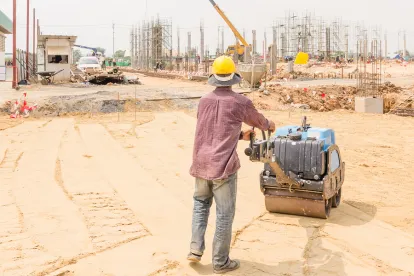The Ohio Supreme Court yesterday reversed the decision of a lower court of appeals and held that a general contractor is not entitled to insurance coverage for property damage arising out of its subcontractor’s faulty work, even when the general contractor purchased a CGL insurance policy with a rider pertaining to coverage related to a subcontractor’s faulty work. The Court reasoned that CGL insurance is triggered only by an “occurrence,” which the Court defined as “an accident, including continuous or repeated exposure to substantially the same general harmful conditions.” Under that definition, according to the Court, an accident requires some element of chance or fortuity—and a subcontractor’s faulty work is not fortuitous. The decision is Ohio Northern University v. Charles Construction Services, Inc., et al., 2018-Ohio-4057 (Oct. 9, 2018), and reaffirms a similar holding the Court reached in Westfield Ins. Co. v. Custom Agri Sys., Inc., 133 Ohio St. 3d 476, 2012-Ohio-4712.
In the Ohio Northern case, Ohio Northern University contracted with Charles Construction Services, Inc. to build The University Inn and Conference Center, a new luxury hotel and conference center on Ohio Northern University’s campus. After the project was completed, ONU discovered that the Inn had suffered extensive water damage from hidden leaks that it believed were caused by the defective work of Charles Construction and its subcontractors. The remediation of this damage led to the discovery of additional structural defects.
ONU then sued Charles Construction in the Hancock County Court of Common Pleas for damages relating to the deficient construction services. Charles Construction, in turn, sued many of its subcontractors that performed the work, and then made a claim against its CGL policy insurer, Cincinnati Insurance Company (CIC). CIC intervened in the lawsuit and asked the trial court to hold that CIC was not required to defend Charles Construction because property damage arising out of a contractor’s (or subcontractor’s) work cannot be an “occurrence” triggering insurance coverage per the Supreme Court’s holding in Custom Agri.
The trial court ruled in favor of CIC, reasoning that the Supreme Court’s decision in Custom Agriwas controlling and that, because Charles Construction’s CGL policy contained the same definition of “occurrence” at issue in the Custom Agri case, CIC had no duty to defend Charles Construction. The Third District Court of Appeals reversed the common pleas court, noting that the Custom Agri decision never addressed any of the subcontractor-specific terms in the CGL policy at issue, including a “products-completed operations-hazard” provision that, on its face, appeared to leave room for coverage for property damage arising out of a subcontractor’s faulty workmanship.
In reversing the Court of Appeals’ decision, the Ohio Supreme Court held that, regardless of any subcontractor-specific language in the CGL policy, the definition of “occurrence” remained the same in this policy as the policy in the Custom Agri case. The definition of “occurrence” remains “an accident, including continuous or repeated exposure to substantially the same and general harmful conditions.” And as in Custom Agri, the Court applied a common meaning definition of “accident,” which is an event that involves fortuity. Because a subcontractor’s faulty work is not a fortuitous event, it cannot meet the definition of an “occurrence.” That, according to the Court, ends the analysis—even if the policy contains additional language regarding potential coverage for a subcontractor’s faulty work.
In finding that Charles Construction’s CGL policy did not apply to claims arising out of its subcontractors’ faulty work, the Ohio Supreme Court acknowledged that its reasoning contrasted with recent decisions of other courts around the country, including state supreme courts in Iowa and New Jersey and a federal circuit court, all of which recognized a recent trend recognizing coverage for subcontractor’s faulty workmanship. Still, the Supreme Court held that “[r]egardless of any trend in the law,” it must rely on the plain and ordinary meaning of the language used in the CGL policy before it.
The Court also noted that its decision is consistent with a 2008 decision of the Arkansas Supreme Court, and that in response to that decision, the Arkansas legislature passed a statute requiring all new CGL policies offered for sale in Arkansas to define “occurrence” to include property damage resulting from faulty workmanship. The Ohio Supreme Court invited the Ohio General Assembly to take similar action if it is so inclined.
Time will tell whether the Ohio legislature takes the Supreme Court up on its invitation. In the meantime, contractors should assume that CGL policies defining an occurrence as “an accident, including continuous or repeated exposure to substantially the same general harmful conditions” do not apply to faulty work of the contractor or its subcontractors—even if the contractor pays an additional premium for a products-completed operations-hazard clause covering damages arising out of a subcontractor’s defective work.


 />i
/>i
